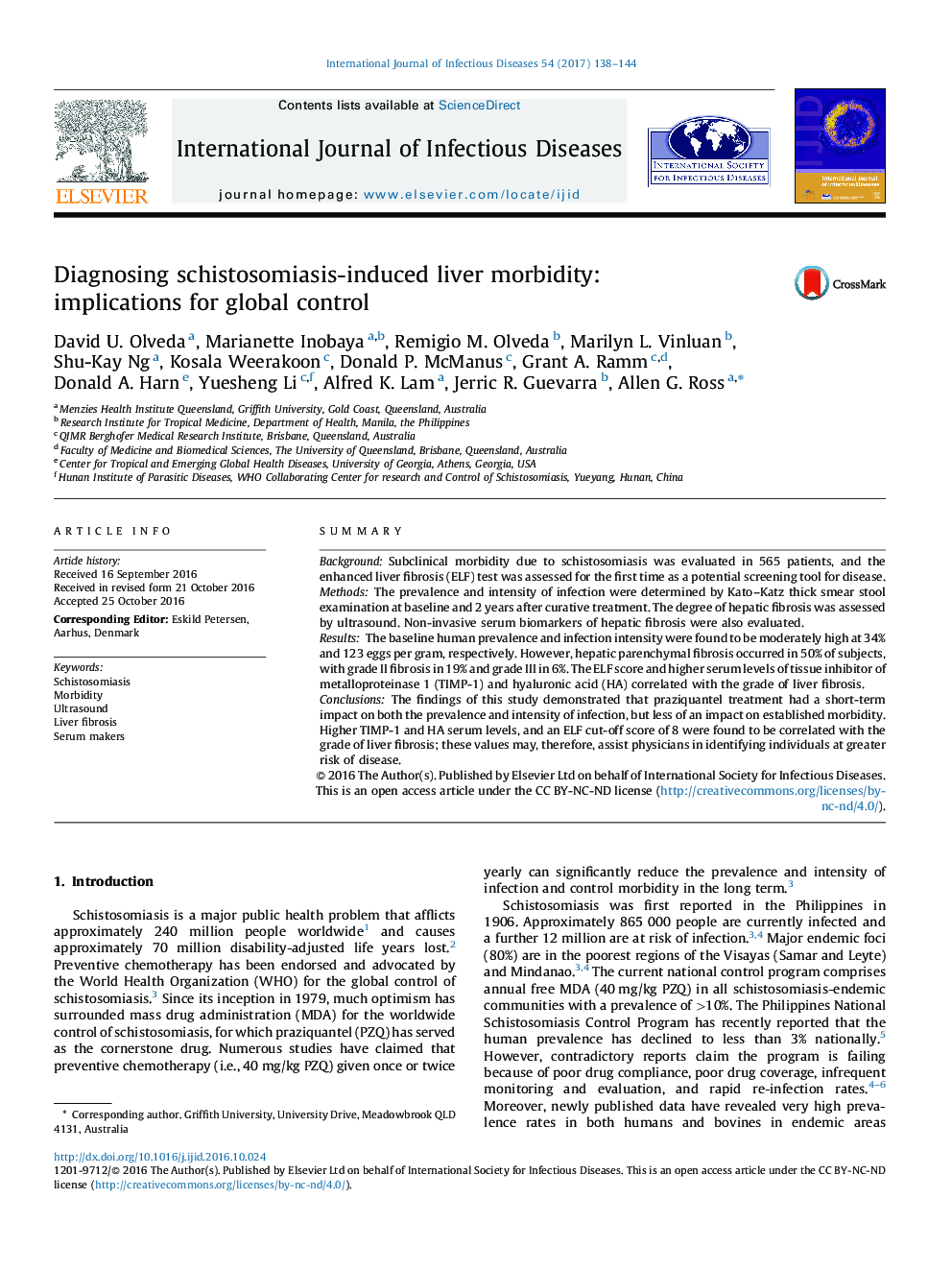| کد مقاله | کد نشریه | سال انتشار | مقاله انگلیسی | نسخه تمام متن |
|---|---|---|---|---|
| 5667247 | 1592039 | 2017 | 7 صفحه PDF | دانلود رایگان |
SummaryBackgroundSubclinical morbidity due to schistosomiasis was evaluated in 565 patients, and the enhanced liver fibrosis (ELF) test was assessed for the first time as a potential screening tool for disease.MethodsThe prevalence and intensity of infection were determined by Kato-Katz thick smear stool examination at baseline and 2 years after curative treatment. The degree of hepatic fibrosis was assessed by ultrasound. Non-invasive serum biomarkers of hepatic fibrosis were also evaluated.ResultsThe baseline human prevalence and infection intensity were found to be moderately high at 34% and 123 eggs per gram, respectively. However, hepatic parenchymal fibrosis occurred in 50% of subjects, with grade II fibrosis in 19% and grade III in 6%. The ELF score and higher serum levels of tissue inhibitor of metalloproteinase 1 (TIMP-1) and hyaluronic acid (HA) correlated with the grade of liver fibrosis.ConclusionsThe findings of this study demonstrated that praziquantel treatment had a short-term impact on both the prevalence and intensity of infection, but less of an impact on established morbidity. Higher TIMP-1 and HA serum levels, and an ELF cut-off score of 8 were found to be correlated with the grade of liver fibrosis; these values may, therefore, assist physicians in identifying individuals at greater risk of disease.
Journal: International Journal of Infectious Diseases - Volume 54, January 2017, Pages 138-144
